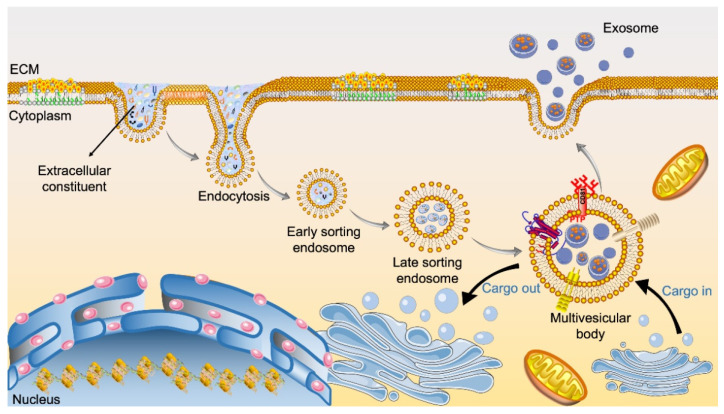Figure 2.
Scheme of the biogenesis of exosomes. Endocytosis and plasma membrane invagination facilitate the entry of cell surface proteins and extracellular components such as lipids, proteins, metabolites, ions, and small molecules into cells, leading to the formation of early sorting exosomes (ESEs). The ESEs then fuse with the endoplasmic reticulum (ER) and/or trans-Golgi network (TGN) and result in late sorting exosome (LSE) formation. A second invagination in the LSEs leads to the generation of multivesicular bodies (MVBs). MVBs can then either fuse with lysosomes for degradation or be transported to the plasma membrane and undergo exocytosis—a process resulting in exosome release. Exosomes, filled with various cellular components such as proteins, mRNAs, miRNAs, lipids, enzymes, and carbohydrates, are released through exocytosis after MVBs fuse with the cell membrane. Released exosomes can be further taken up by adjacent or remote cells in various ways, including receptor-mediated endocytosis and fusion with the plasma membrane of cells.

